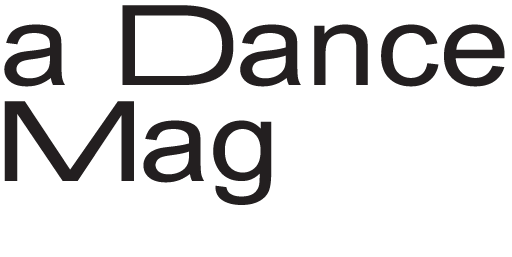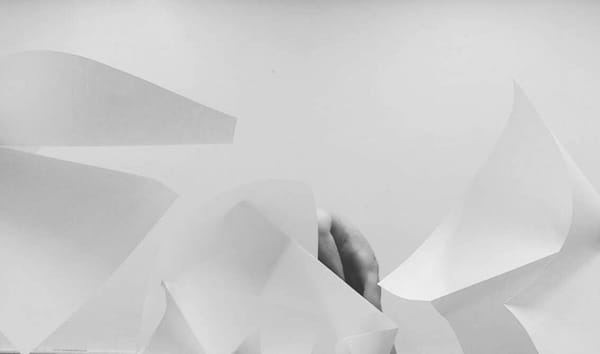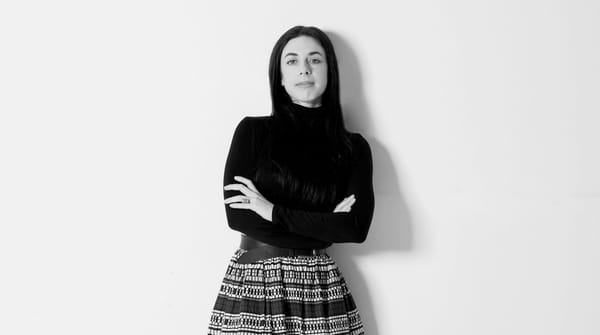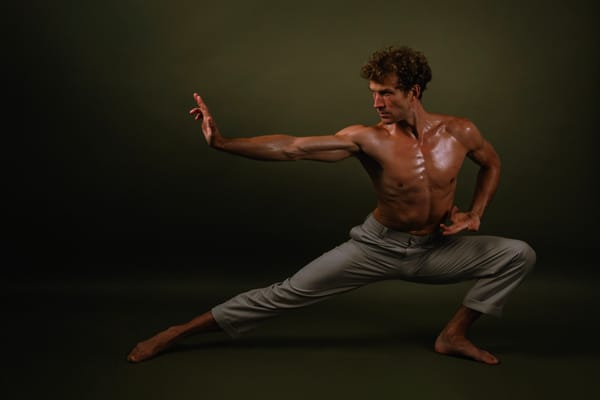The Rhythm of a Heartbeat: Karla Grotting on Choreographing Joy and Isolation in Whoville
Through the whimsy of Whoville, the choreographer reflects on jazz’s communal roots, the choreography of belonging, and what it means to dance joy into constraint.
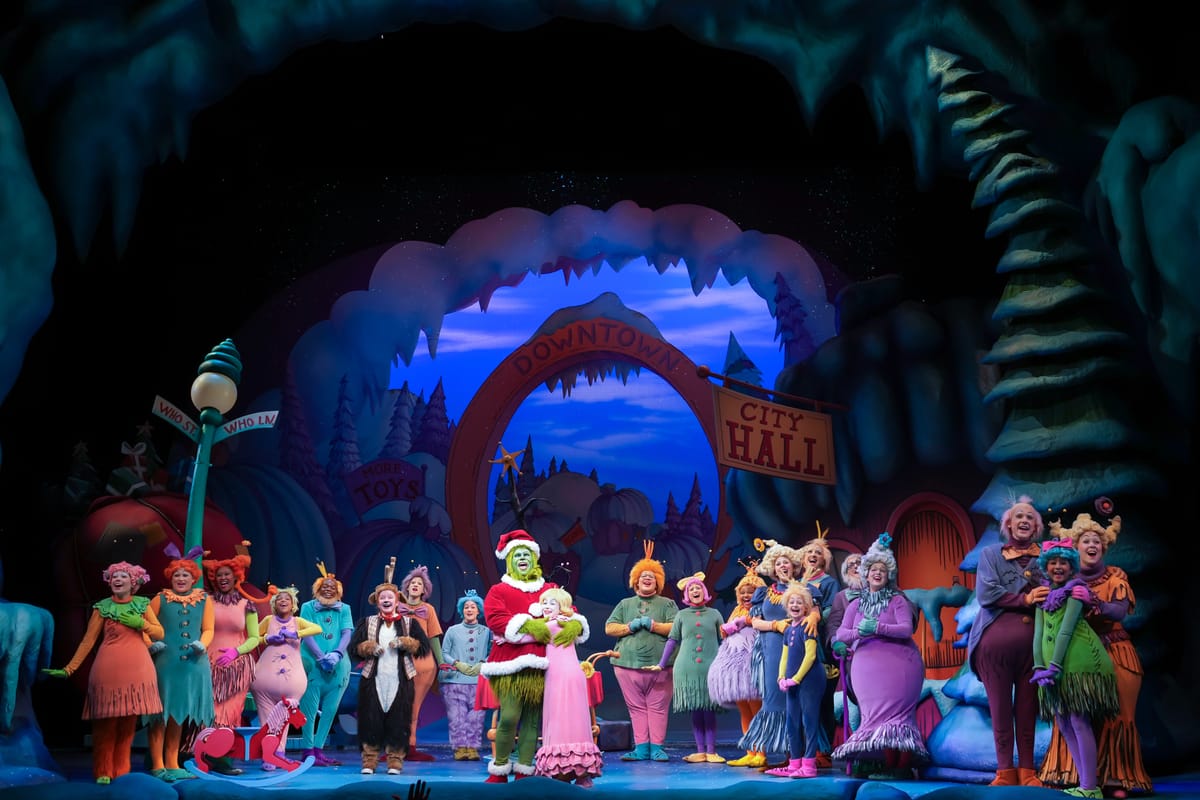
The Whos of Whoville present an unusual choreographic challenge. Try imagining dancers in extraordinarily long, pointed shoes attempting intricate footwork. Add oversized pods made from air-conditioning filter material that obscure every movement of the shoulders, ribcage, and hips. It's enough to make any choreographer reconsider their career choices.
But for Karla Grotting, the choreographer of this season's production of Dr. Seuss's How the Grinch Stole Christmas!, these constraints have shaped her creative choices. "However, they do have adorable tails, and fabulous wigs and bouncy hair trimmings which are a lot of fun to play with in expressing emotions, and playing in a rhythmic way with the music," she explains. When traditional dance vocabulary becomes difficult, rhythm and emotion find new expression in swaying tails, bouncing hair, and the Christmas decorations, shopping bags, and toys the characters frequently carry.
"These many elements are both enhancements and limitations to movement, and it's a good stretch to find creative ways to drive the storytelling forward."
Isolation Versus Community: Two Movement Languages
The story of the Grinch demands a choreographic contrast: the solitary rhythm of a creature who lives alone on a mountain versus the collective joy of an entire town. For Karla, with her background blending jazz, tap, body percussion, modern, folk, and theatrical dance, the central question is how to develop a movement language that distinguishes "the Grinch's solitary rhythm from the Whos' collective joy."
The costume constraints she describes apply specifically to the Whos. The pods obscure their torsos, the pointed shoes limit their footwork. Yet within these limitations, Karla has found ways to express the communal spirit of Whoville through what remains visible and mobile: those bouncy wigs, those swaying tails, those armfuls of festive props.
The choreographic problem is as much about the story as the costumes. How do you show isolation versus community through movement? How do you make an entire town's joy readable when the dancers' bodies are partially hidden?
The Basement Where Everyone Danced
Karla’s understanding of communal joy has roots in her own childhood. "I grew up thinking that everyone was dancing in their basements and that each hour, a new set of 12 friends would drop by to learn tap, jazz, ballet, tumbling, acrobatics, baton, and ballroom dancing."
Her mother's basement studio created a particular worldview. Every hour brought a new group of students, a new style, a new record spinning on the turntable. It seemed perfectly normal until a kindergarten playdate revealed otherwise.
"I went home with a friend and saw that she had a full-size pinball machine in her basement. I was stunned, and asked her 'Where's your dance studio?'"
That basement taught lasting lessons. "We learned the important lesson of how to break down complex material into bite-size pieces, that some people learn faster, and some people take more time. And I also learned that dancers are my favorite kind of people."
She reflects on what those early years taught her: "Growing up dancing made me see the joy in dancing together, and the joy of playing records on the record player, and each finding our own way of moving."
The communal joy of Whoville, she notes, "feels connected to your own beginnings, dancing in your mother's basement studio." The connection between those early basement classes and a fictional town full of joyful Whos isn't accidental.
Teaching the Root, Not Just the Steps
"Although tap dance, jazz dance, and jazz music are indigenous American art forms, the seed and the root of these forms is African."
This isn't a footnote in Karla’s teaching. It's where she begins. "Whenever I use any step from these forms, I try to teach the history, the trajectory, the social context, and the power in these forms, so that students can treat them with respect and understanding."
Her first movement lecture focuses on "African elements that exist, or mutated to survive in jazz music and jazz dance." She's specific about the gap she encounters: "It's not uncommon for me to encounter students with years of jazz and tap dance training who have never listened or danced to jazz music."
Her response is to teach the music alongside the dancing. "It really helps students 'round the corner' into a deeper connection; finding ways of moving and listening that support participating in the collective pulse, a giving in to gravity, a democratic use of body parts, and drive for free expression."
She's lucky enough to have live musicians in her classes. "We are often in conversation with our musicians to discover what it means to play in 'a jazz way'. As dancers, we try to explore those ideas in our physicality and find what it means to dance in 'a jazz way'."
That concept of the collective pulse, the democratic use of body parts, the free expression within a shared rhythm, connects directly to the choreographic challenge of Whoville. How do you create collective joy through movement? How do you show a community that moves together not because they're forced to match, but because they're genuinely connected?
Remembering the Lost Voices
Lost Voices in Jazz: The Choreographers of the Minnesota Jazz Dance Company was, in Karla’s words, "a very personal project."
"I started working with this company as a teenager, and it gave me a front row seat to the American AIDS crisis of the 1980's and early 90's." She describes it as "a time filled with secrecy, fear, shame, blame, deep homophobia. Funding and research were very late in responding to this tragedy."
The losses were devastating. "Our little dance company lost four of its choreographers, one dancer and our studio manager to HIV/AIDS. At the time, I felt the pain of losing friends, mentors, and such unique artists."
But the perspective shifted over time. "Thirty years later, as a jazz dancer, educator, and choreographer, I could see that the entire landscape of jazz dance styles and choreography were altered by these unrelenting losses."
The project had a dual purpose: "to remember these artistic voices, and also to wake people up from the social amnesia around HIV/AIDS and activate people to support organizations that work with prevention, education, testing, and support of people living with HIV/AIDS."
From Formation to Freedom
Karla’s teaching philosophy addresses a specific moment in a dancer's development. "I most often encounter students in a college setting. They may have spent years working on their dance techniques, learning to dance in groups, holding formations, and being exacting to match their classmates. By the time they get to my class, they have those tools."
Her goal is different. "I am interested in helping them to transcend their technique, and to explore a use of dynamics, and to play with their musicality like a jazz musician. I want them to start to think of themselves like a soloist, and to find the freedom and true expressiveness in their dancing."
She emphasizes "the social genealogy of dance" and believes "understanding that lineage is crucial for a dancer's individuality." The approach connects technical mastery with historical understanding, individual expression with collective tradition.
This balance between individual voice and collective tradition runs through her work, from her teaching to her choreography. It's present in the challenge of staging the Grinch story: how to show both the isolation of one character and the collective spirit of an entire community.
Returning to the Well
After decades of performing with companies like Flying Foot Forum and Jazzdance by Danny Buraczeski, after years of teaching and creating new work, Karla reflects on what sustains her practice.
"All of the delicious experiences I've had as a dancer are deep in my body, and I can't separate them from me. The experiences, the memories, the joys and the hardships of a dancer's life shape everything I do. I treasure them and wrestle with them."
She continues: "I love to share the history, the deep knowledge, the philosophies, and the ways of moving with every new generation of dancer that I encounter. Evolution, for me, means going back to the root, back to the well, and finding that you are different each time you return to it."
It's a philosophy that applies to staging a familiar story like Dr. Seuss's How the Grinch Stole Christmas!. The tale of isolation and community, of a heart that grows three sizes, of discovering what matters most, gets told again each season. But each production is different, shaped by new constraints, new dancers, new creative solutions.
Karla’s Whoville may be built with air-conditioning filter pods and impractically long shoes, but within those constraints, she's finding ways to express what the story has always been about: the rhythm of community, the power of collective joy, and what happens when isolation finally gives way to connection.
Even if you have to express it all through bouncing wigs and swaying tails.
The production of Dr. Seuss's How the Grinch Stole Christmas! runs through the holiday season at The Children Theater Company, Minneapolis, USA.
